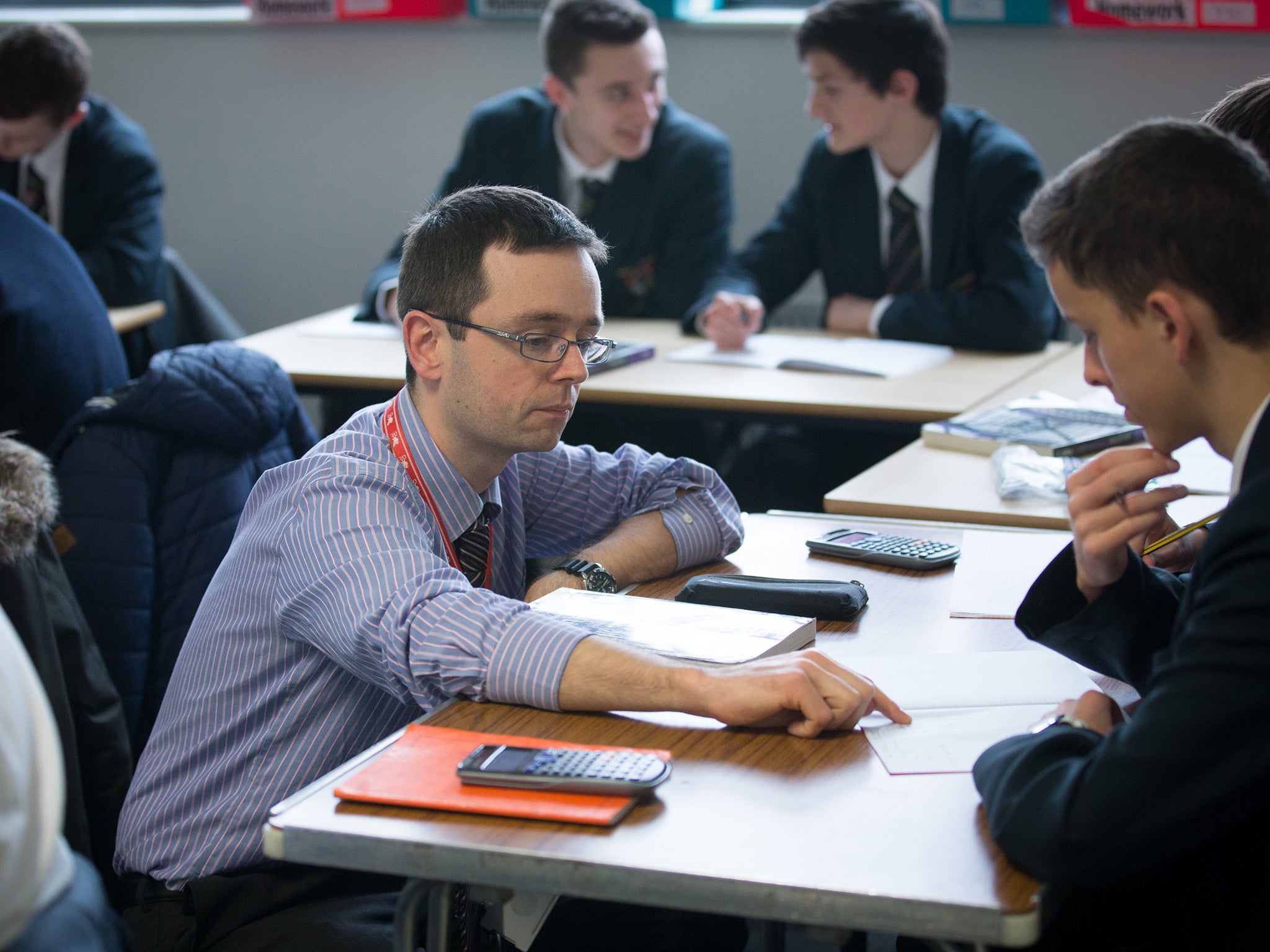Schools face staffing crisis as supply teacher bill soars by more than a quarter
New survey finds almost four in five schools are finding it difficult to recruit

Your support helps us to tell the story
From reproductive rights to climate change to Big Tech, The Independent is on the ground when the story is developing. Whether it's investigating the financials of Elon Musk's pro-Trump PAC or producing our latest documentary, 'The A Word', which shines a light on the American women fighting for reproductive rights, we know how important it is to parse out the facts from the messaging.
At such a critical moment in US history, we need reporters on the ground. Your donation allows us to keep sending journalists to speak to both sides of the story.
The Independent is trusted by Americans across the entire political spectrum. And unlike many other quality news outlets, we choose not to lock Americans out of our reporting and analysis with paywalls. We believe quality journalism should be available to everyone, paid for by those who can afford it.
Your support makes all the difference.The bill to draft in supply teachers into classrooms has soared by more than one-quarter over two years amid warnings that schools face a recruitment crisis.
The increasing price tag emerged after a survey found that the majority of schools are struggling to fill vacancies at a time when growing numbers of experienced staff are leaving the profession.
Schools in England spent £1.29bn in 2013-14 to hire temporary staff, compared with £1.02bn two years earlier. The cost is rising rapidly in academies and free schools, more than tripling from £102m to £354m over the period.
It has outpaced the expansion of the flagship programmes, with academies and free schools spending an average of £92,600 on supply staff against £65,300 two years earlier.
The Department for Education (DfE) argued that the higher spending reflected larger numbers of pupils and dismissed claims of a crisis.
The new figures coincide with an apparent exodus from the profession, with levels of departures running at a record high, and claims that teaching numbers are critically low in subjects such as physics, religious education and design and technology.
Between November 2013 and November 2014, a total of 49,120 teachers left, a rise of 3,480 on the previous year, although that figure includes retirements and deaths.
Possible explanations include that the growth of the economy is encouraging graduates to pursue other careers and that the workload of teaching is deterring potential applicants.
A survey by the NAHT union found that almost four in five schools are finding it difficult to recruit, with the shortage of applicants cited by head teachers as the main reason.
Lucy Powell, the shadow Education Secretary, who uncovered the spending figures, said: “With chronic shortages of teachers in our schools, this Government is risking the education of the next generation.
“Ministers have mishandled teacher training, putting applicants off and constantly talked down the profession, causing thousands of teachers to quit. As a result, half of all schools had unfilled positions at the start of this year and are being forced to turn to unqualified staff, temporary supply teachers, non-specialists, and larger class sizes to try to plug the gaps.
“Nothing is more important for raising standards and improving social mobility than ensuring there are excellent teachers in every school. The Government urgently needs to get a grip on this problem.”
Last month the Department for Education admitted that targets for recruiting trainee teachers in England had been missed for the third year running.
Overall, 28,148 graduates began teacher training courses, which was 94 per cent of the target. Just 82 per cent of the target was achieved at secondary level, where schools are set to experience increases in class sizes.
A DfE spokeswoman said: “It is completely misleading to suggest there are chronic shortages of teachers or that a record number of teachers have ‘quit’ the profession – our increased spending on supply teachers simply reflects our increased total spending in response to rising pupil numbers.
“The overall teacher vacancy rate is 0.3 per cent and has remained under 1 per cent for the past 15 years.”
The department says more than 1,000 more graduates are training in secondary subjects than a year ago and the number of former teachers coming back to the classroom is rising.
A Tory spokesman accused Labour of “scaremongering”. He said: “ Rather than recognise that the number and quality of teachers in our schools is at a record high, they talk down the teaching profession.”
Join our commenting forum
Join thought-provoking conversations, follow other Independent readers and see their replies
Comments